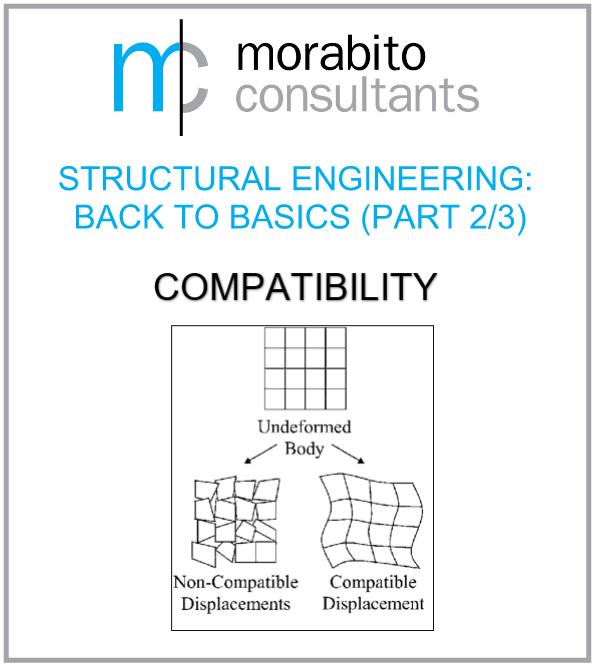Structural Engineering: Back to Basics (Part 3/3) | January 28, 2022

In the third and final part of our ‘Back to Basics’ series, we will be discussing the final basic component of physics used to analyze a structure: Compatibility.
Compatibility involves the understanding of how engineers know or assume a structure will likely move or deform. An application of compatibility could involve the understanding of how composite materials behave. Reinforced concrete is a composite material in numerous ways, but typically thought of as being a composite between the rebar and solid cement and rock mass. When an engineer needs to determine how much force finds its way to a particular piece of rebar, compatibility is needed. We know that contact surface between the rebar and concrete must strain (move) at the same time or else it means that the rebar has detached from its bond. This mechanism is referred to as Strain Compatibility and it helps engineers determine the distribution of stresses/forces throughout reinforced concrete.
No matter how complicated a structure may be, as long as Constitutive Properties, Equilibrium, and Compatibility are reasonably satisfied, the engineering solution is typically considered to be valid.
